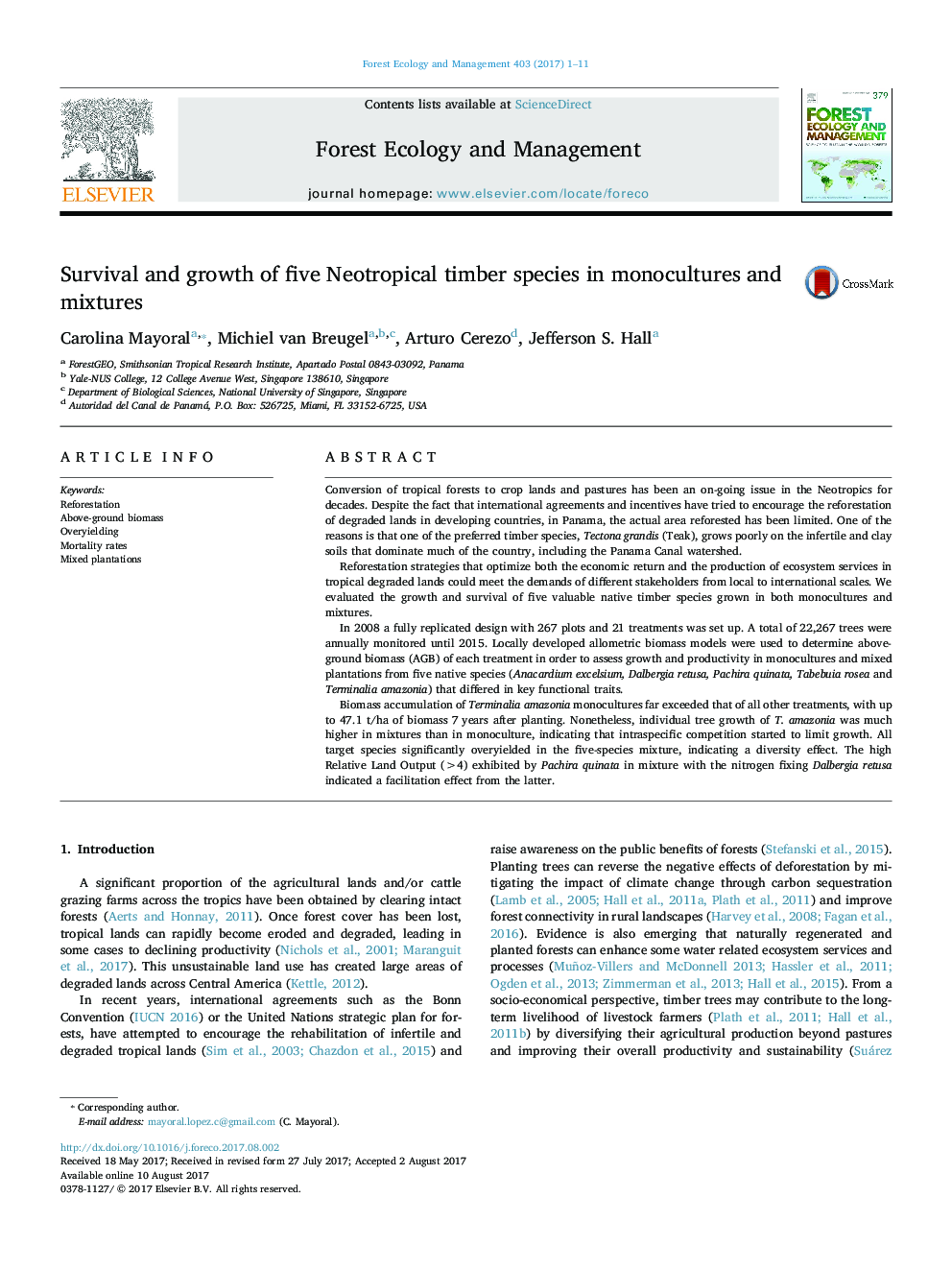| کد مقاله | کد نشریه | سال انتشار | مقاله انگلیسی | نسخه تمام متن |
|---|---|---|---|---|
| 6459325 | 1421355 | 2017 | 11 صفحه PDF | دانلود رایگان |
- Monocultures of Terminalia amazonia exhibited the largest aboveground biomass accrual.
- The higher diversity of species increased the species' productivity at the tree level.
- Facilitation occurred from the nitrogen-fixing D. retusa to P. quinata.
- Mixed stands with Terminalia amazonia are a suitable option to use in reforestation of the PCW.
Conversion of tropical forests to crop lands and pastures has been an on-going issue in the Neotropics for decades. Despite the fact that international agreements and incentives have tried to encourage the reforestation of degraded lands in developing countries, in Panama, the actual area reforested has been limited. One of the reasons is that one of the preferred timber species, Tectona grandis (Teak), grows poorly on the infertile and clay soils that dominate much of the country, including the Panama Canal watershed.Reforestation strategies that optimize both the economic return and the production of ecosystem services in tropical degraded lands could meet the demands of different stakeholders from local to international scales. We evaluated the growth and survival of five valuable native timber species grown in both monocultures and mixtures.In 2008 a fully replicated design with 267 plots and 21 treatments was set up. A total of 22,267 trees were annually monitored until 2015. Locally developed allometric biomass models were used to determine aboveground biomass (AGB) of each treatment in order to assess growth and productivity in monocultures and mixed plantations from five native species (Anacardium excelsium, Dalbergia retusa, Pachira quinata, Tabebuia rosea and Terminalia amazonia) that differed in key functional traits.Biomass accumulation of Terminalia amazonia monocultures far exceeded that of all other treatments, with up to 47.1 t/ha of biomass 7Â years after planting. Nonetheless, individual tree growth of T. amazonia was much higher in mixtures than in monoculture, indicating that intraspecific competition started to limit growth. All target species significantly overyielded in the five-species mixture, indicating a diversity effect. The high Relative Land Output (>4) exhibited by Pachira quinata in mixture with the nitrogen fixing Dalbergia retusa indicated a facilitation effect from the latter.
Journal: Forest Ecology and Management - Volume 403, 1 November 2017, Pages 1-11
